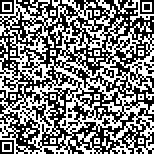附件
|
| 引用本文: | 王慧勇,遆超普,王良杰,董磊,夏永秋,颜晓元.基于SWAT模型的典型农业小流域氮污染时空分布特征及关键源解析.湖泊科学,2022,34(2):517-527. DOI:10.18307/2022.0213 |
| Wang Huiyong,Ti Chaopu,Wang Liangjie,Dong Lei,Xia Yongqiu,Yan Xiaoyuan.Spatiotemporal distribution characteristics and key sources of nitrogen pollution in a typical agricultural watershed based on SWAT model. J. Lake Sci.2022,34(2):517-527. DOI:10.18307/2022.0213 |
|
| |
|
|
| 本文已被:浏览 6659次 下载 7013次 |

码上扫一扫! |
|
|
| 基于SWAT模型的典型农业小流域氮污染时空分布特征及关键源解析 |
|
王慧勇1,2, 遆超普2, 王良杰1, 董磊2, 夏永秋2, 颜晓元2
|
|
1.南京林业大学南方现代林业协同创新中心, 南京 210037;2.中国科学院南京土壤研究所, 土壤与农业可持续发展国家重点实验室, 江苏常熟农田生态系统国家野外科学观测研究站, 南京 210008
|
|
| 摘要: |
| 水资源恶化、水体富营养化严重威胁生态环境健康,农业活动所产生的氮是造成水污染的主要原因之一.本研究以句容水库农业流域为研究对象,基于实地监测数据验证了SWAT模型模拟当地氮污染的适用性,并分析了氮素负荷的时空分布特征及其关键源.结果表明:硝态氮(NO3--N)和总氮(TN)的年均入库量分别为9.98和27.22 t.时间尺度上,入库氮素负荷量年际呈现“M”型波动趋势;年内主要集中在汛期(6—9月),汛期氮素负荷量占到全年的84%以上.空间尺度上,径流NO3--N负荷量和TN负荷量均呈现“局部集中,临近水体”的分布特征,主要集中在农田占比高的地区.流域入库TN负荷量主要来源是农田施肥,贡献率达49.60%.研究结果可为当地流域氮污染控制提供理论依据. |
| 关键词: SWAT模型 氮素负荷 时空特征 关键源 句容水库 农业流域 |
| DOI:10.18307/2022.0213 |
| 分类号: |
| 基金项目:国家自然科学基金项目(41961124004,42061124001)资助. |
|
| Spatiotemporal distribution characteristics and key sources of nitrogen pollution in a typical agricultural watershed based on SWAT model |
|
Wang Huiyong1,2, Ti Chaopu2, Wang Liangjie1, Dong Lei2, Xia Yongqiu2, Yan Xiaoyuan2
|
|
1.Co-Innovation Center for Sustainable Forestry in Southern China, Nanjing 210037, P. R. China;2.Changshu National Agro-Ecosystem Observation and Research Station, State Key Laboratory of Soil and Sustainable Agriculture, Institute of Soil Science, Chinese Academy of Sciences, Nanjing 210008, P. R. China
|
| Abstract: |
| The deterioration of water resources and surface water eutrophication threaten the health of the ecological environment seriously. Nitrogen (N) pollution from agricultural activities is an important source of water pollution. In this study, the Jurong Reservoir agricultural watershed was taken as the research object, and the local applicability of the SWAT model for N pollution was validated based on field monitoring data. In addition, the spatial and temporal distribution characteristics of N load and key pollution sources were analyzed. During the monitoring period, the annual N load showed an "M" type fluctuation trend, with a high N load occurred in the flood season from June to September, which accounted for more than 84% of the total N load of the whole year. Moreover, the spatial distribution of nitrate nitrogen (NO3--N) and total nitrogen(TN) load showed a trend of "local concentration, adjacent to water body", mainly concentrated in the area with a high proportion of farmland. Farmland fertilizer is the main source of TN load in this watershed, contributing to 49.60% of total N load and the average annual storage capacity of NO3--N and TN was 9.98 t and 27.22 t, respectively. Our results can serve as a theoretical basis for the control of N pollution at the watershed scale. |
| Key words: SWAT model nitrogen load spatiotemporal characteristics key sources Jurong Reservoir agricultural watershed |
|
|
|
|